This top round roast recipe is juicy, tender, and melt-in-your-mouth delicious! The beef is seasoned with a savory rub of garlic and herbs, slow-roasted in the oven to perfection, and served with a rich gravy.
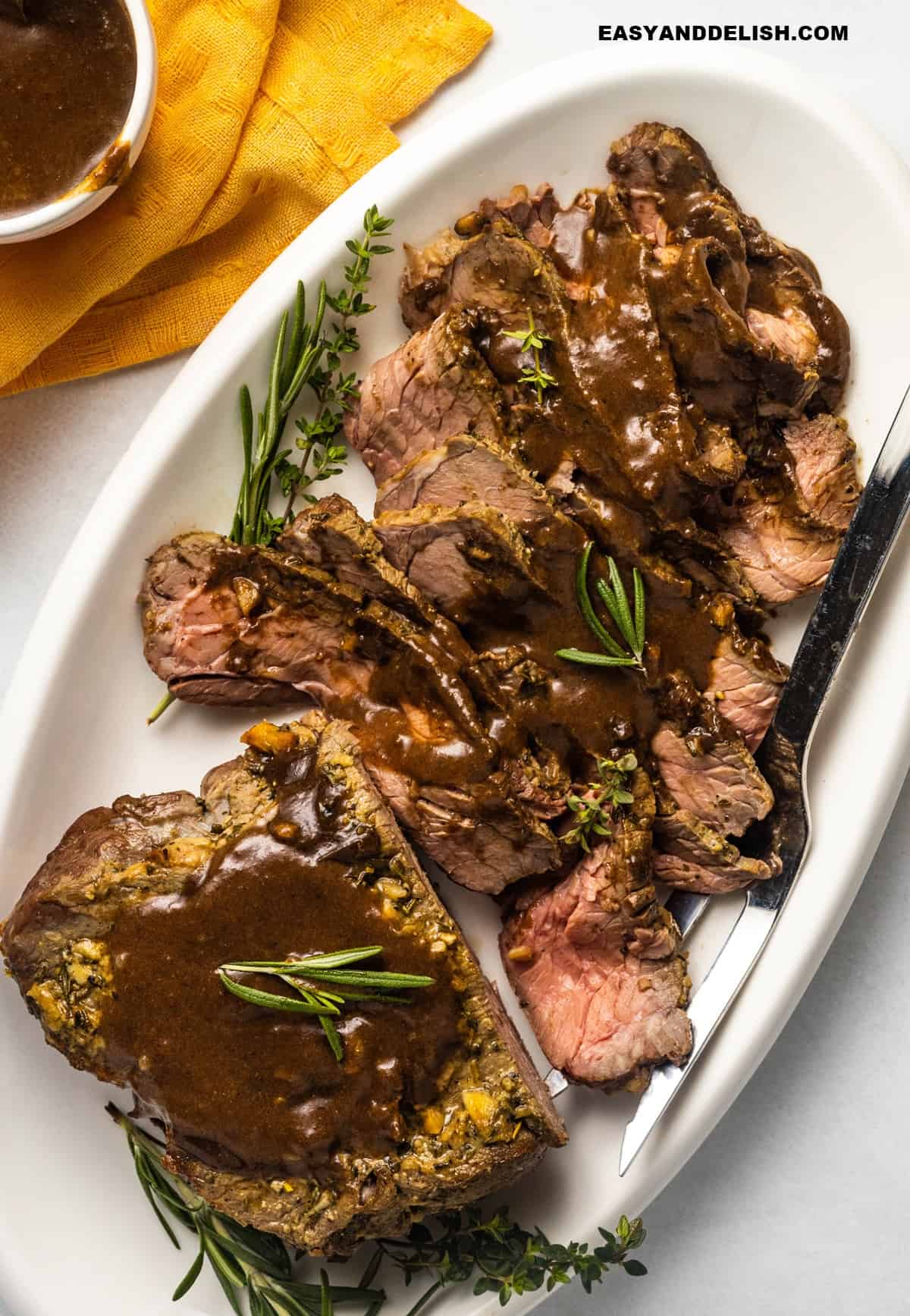
Table of Contents
- 1 Ingredients and substitutions
- 2 How to make this top round roast recipe
- 3 HOW TO STORE
- 4 What is roast beef?
- 5 BEST CUTS OF MEAT FOR ROAST BEEF
- 6 TIPS FOR MAKING THE BEST ROAST BEEF RECIPE
- 7 What to serve with
- 8 Roast beef vs. pot roast
- 9 roast beef vs. beef roast
- 10 FAQS
- 11 Other roast Beef recipes
- 12 Top Round Roast Recipe
How about the perfect roast beef for Sunday suppers or Christmas?
Ingredients and substitutions
For the Beef TOP ROUND Roast Recipe:
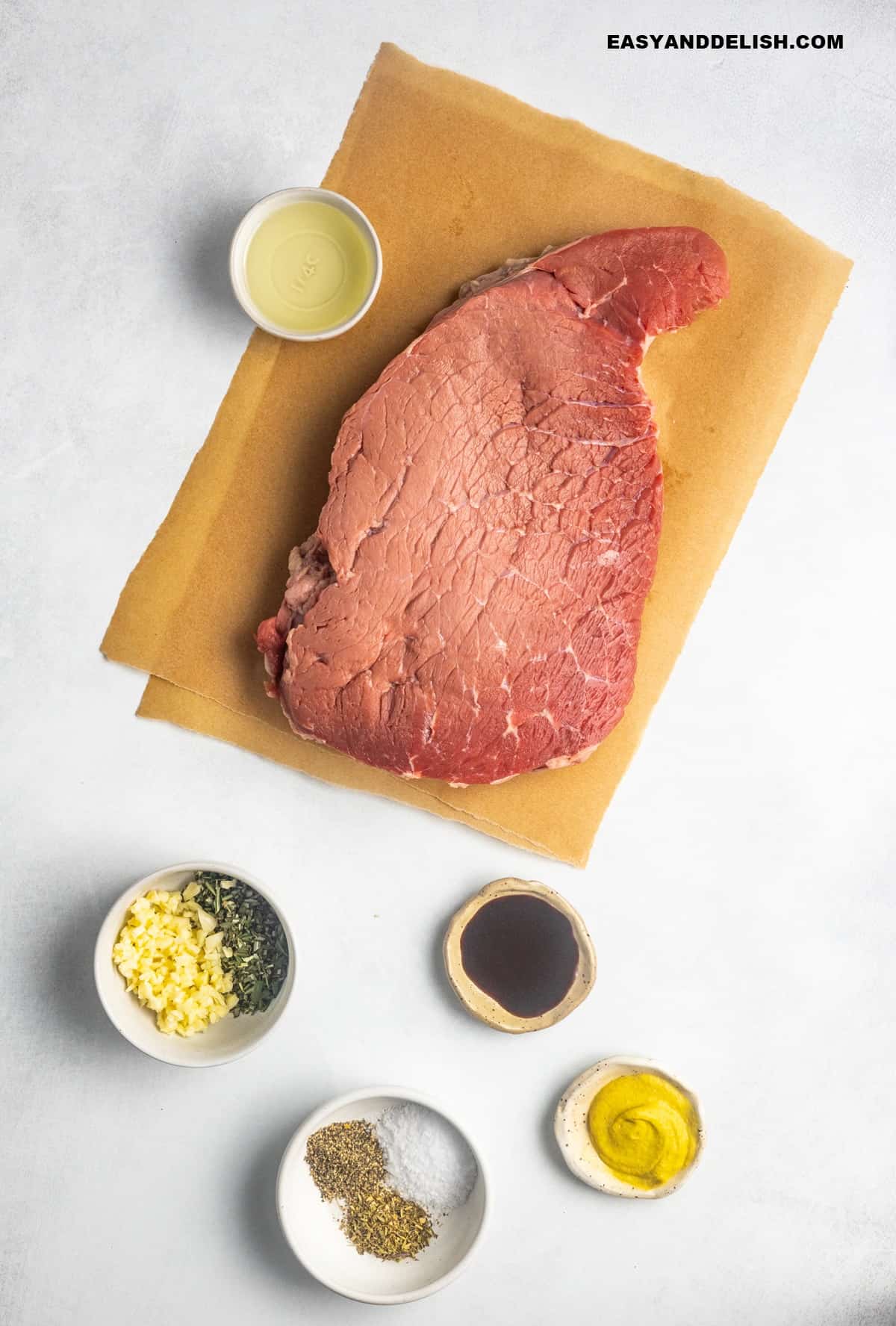
- 3 lbs top-round roast beef, at room temperature
- 3 tablespoons avocado oil (or canola oil, or any high-smoke point oil with a mild flavor)
- 1 tablespoon dijon mustard - Alternatively, stone-ground mustard or regular mustard will work.
- 1 tablespoon worcestershire sauce - You can also try balsamic vinegar or soy sauce.
- 1 ½ tablespoon fresh rosemary (Substitutes: marjoram, oregano, sage, or thyme)
- 1 tablespoon minced garlic, about 3 large cloves - Powdered garlic will work in a pinch.
- ½ teaspoon Italian seasoning - Or, make your own with oregano, basil, thyme, sage, and rosemary, or use others to replace this roast beef seasoning blend though.
- 2 teaspoon fine sea salt
- 1 teaspoon fresh ground black pepper
For the Beef Gravy:
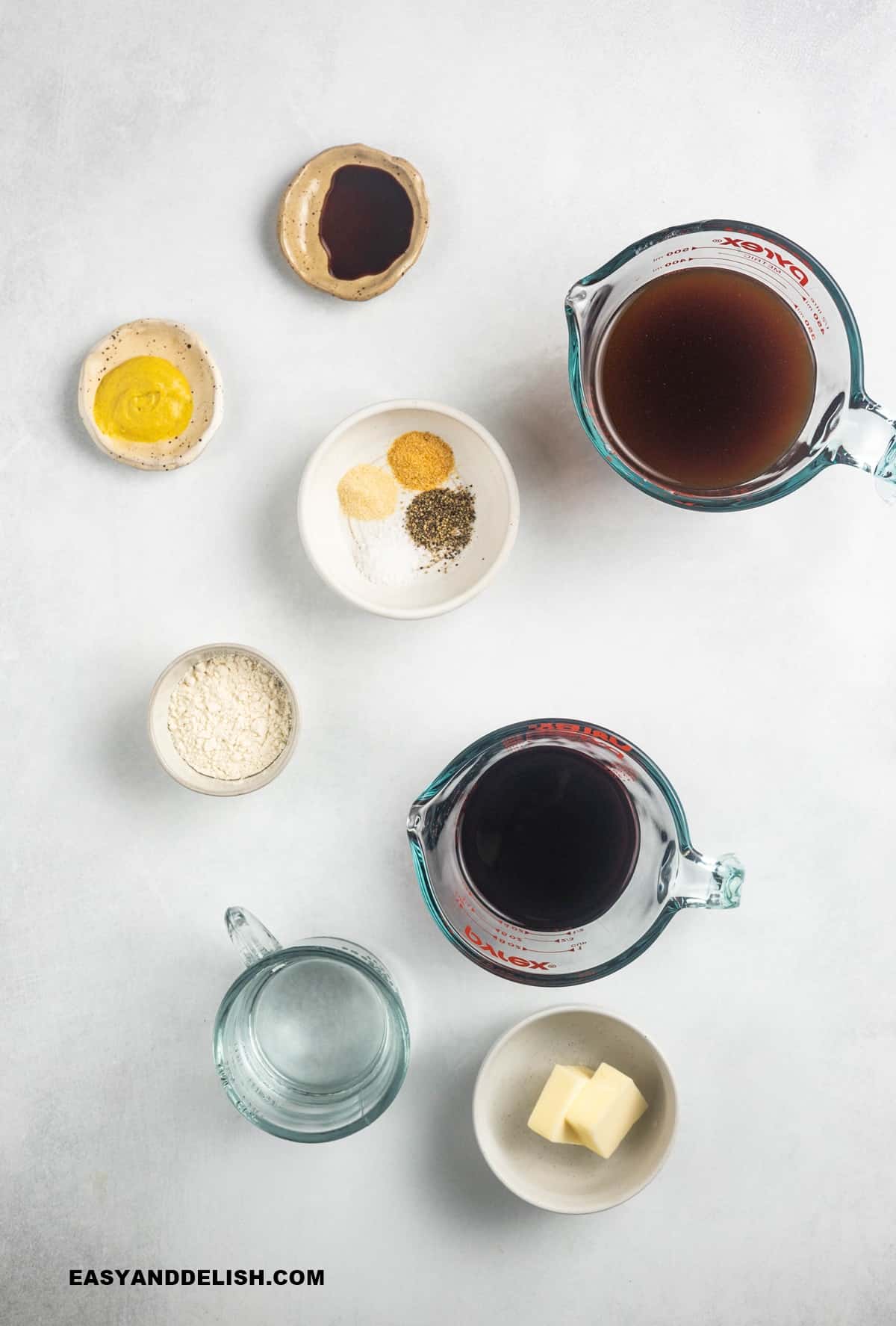
- ¼ cup cold water
- 1 ½ tablespoon xanthan gum (if you are not on a keto or low-carb diet, you can use the same amount of cornstarch)
- ½ cup dry red wine (such as Merlot – it will work for those on a low-carb diet)
- 1 ½ cups beef broth (if using low-sodium broth, adjust the salt to your taste)
- ¼ teaspoon garlic powder - Or, use extra onion powder.
- ¼ teaspoon onion powder - Similarly, you can replace onion powder with more garlic powder.
- ½ teaspoon worcestershire sauce
- ⅛ teaspoon dijon mustard
- ¼ teaspoon fine sea salt, or to taste
- ¼ teaspoon freshly ground black pepper
- 2 tablespoon unsalted butter
How to make this top round roast recipe
- 1. Preheat oven to 450º F. You’ll need a roasting pan with an oven rack to allow the air to circulate and to catch the drippings for gravy.
- 2. In a small bowl, mix oil, Dijon mustard, Worcestershire sauce, rosemary, garlic, Italian seasoning, salt and pepper. Set aside for the flavors to meld for 5 minutes though.
- 3. Pat the roast dry with paper towels and tie it with a kitchen string in 1-inch increments to create a more even thickness on the roast.
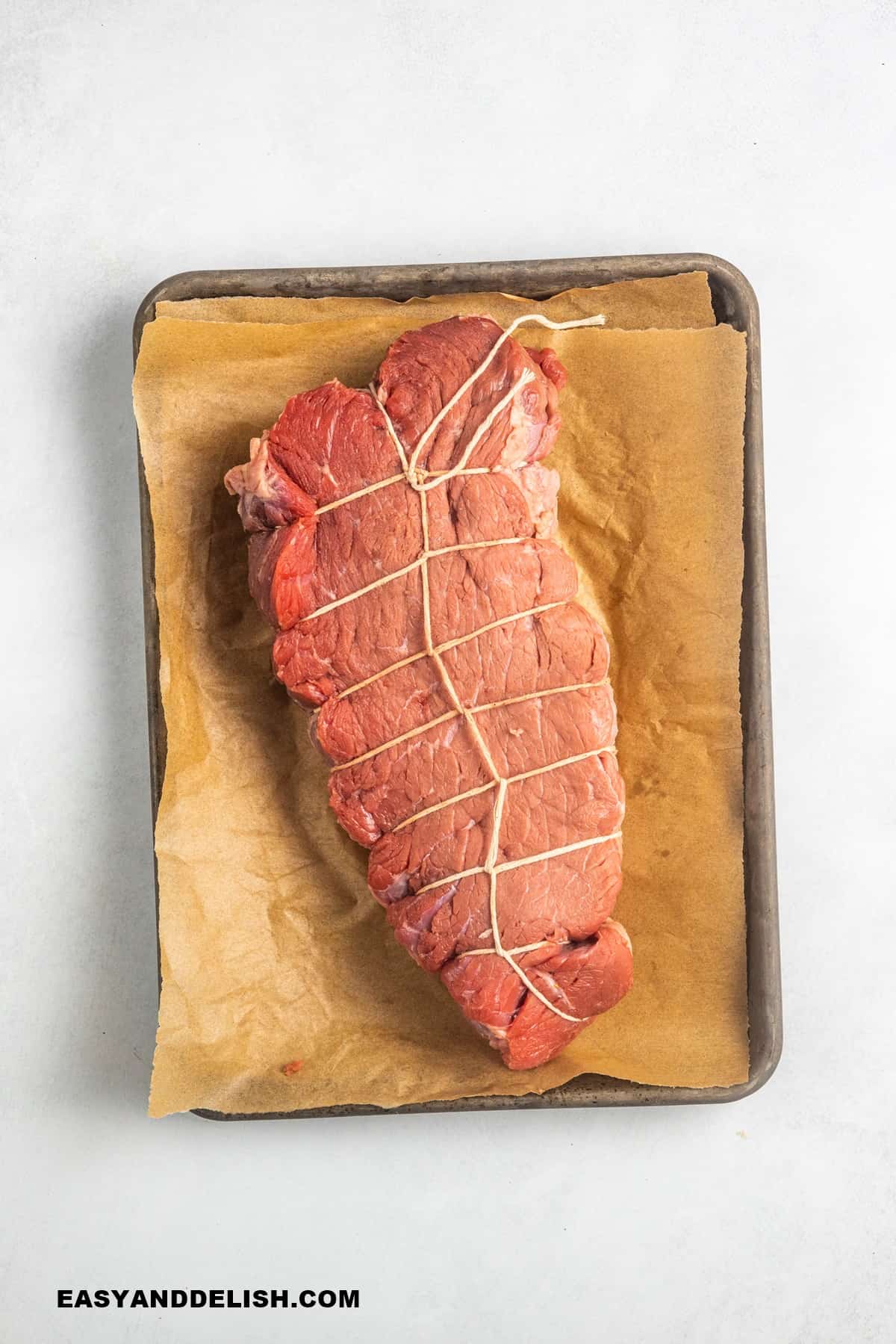
- 4. Rub the roast all over with the seasoned oil. Put an oven-safe thermometer into the deepest part of the roast and set the roast on a rack inside the roasting pan.
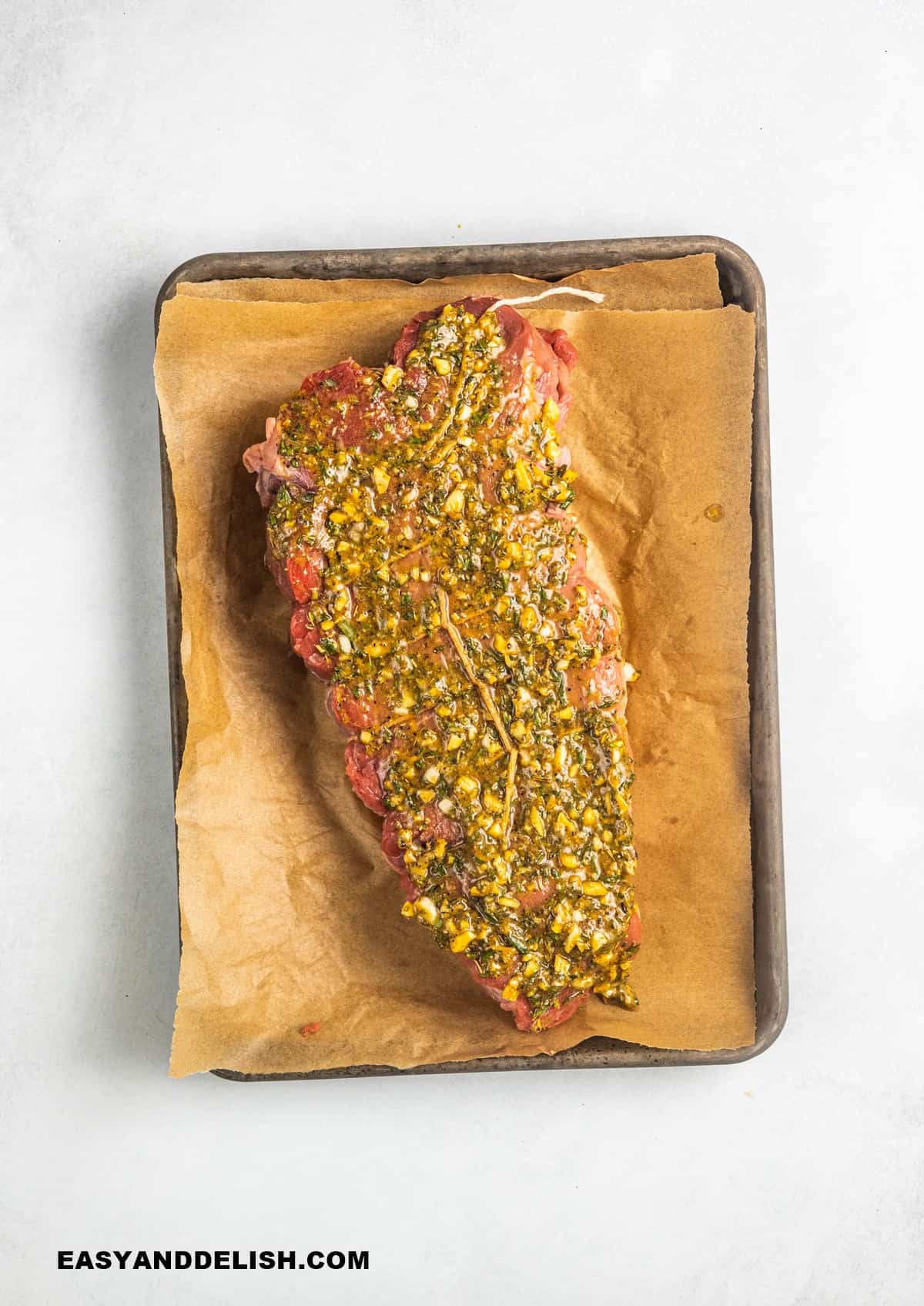
- 5. Bake on the center oven rack at 450º F for 15 minutes then (without opening the oven), reduce heat to 250º F and bake for about 25-28 minutes per pound, or until the thickest part of the roast reaches 130ºF for Medium-Rare. Note the temperature will continue to rise 5 degrees as it rests.
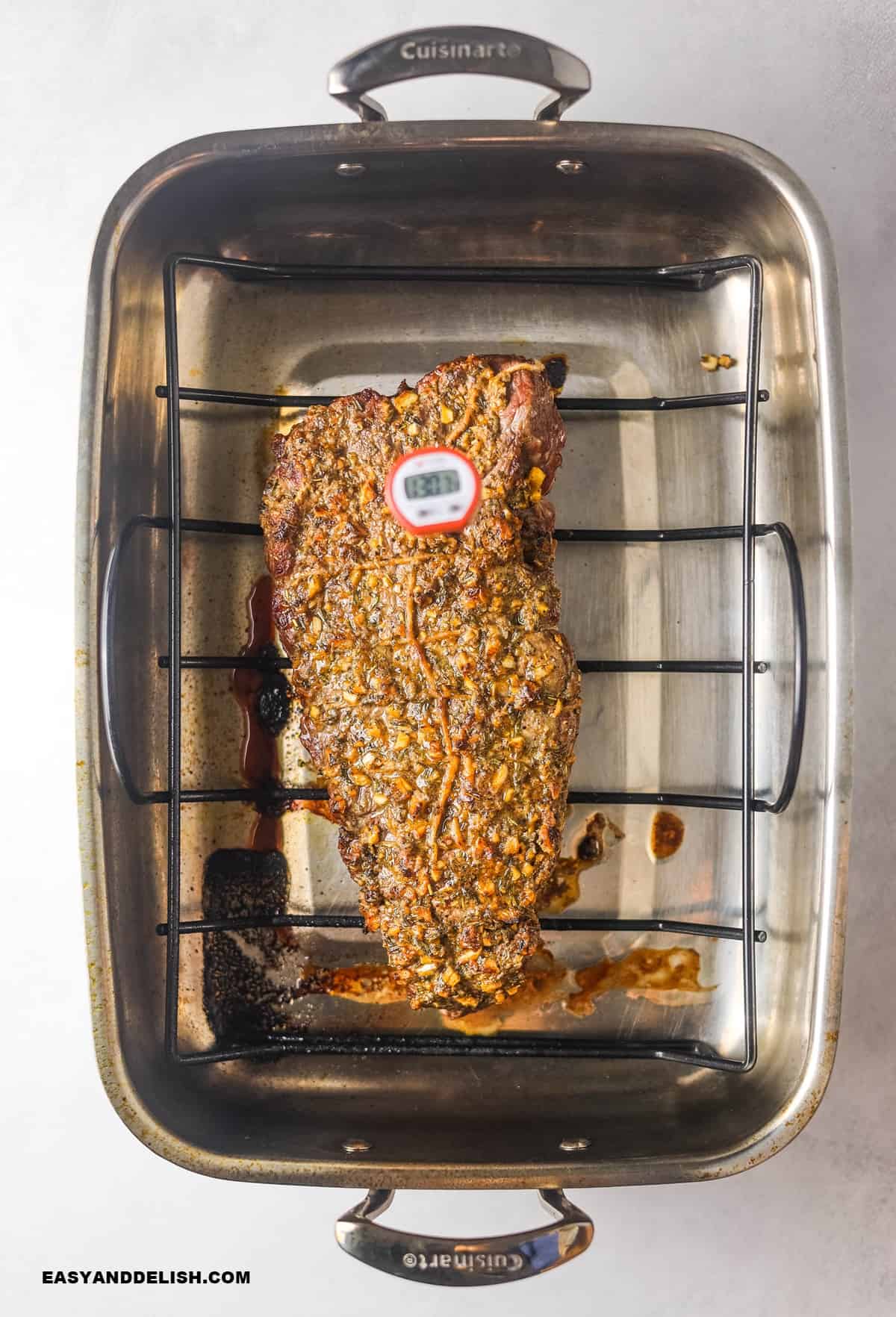
- 6. Remove from the oven, tent with foil, and rest for 15 minutes while you make the gravy. When ready to serve, cut off the kitchen string and then cut the roast beef against the grain, shaving the meat into thin slices.
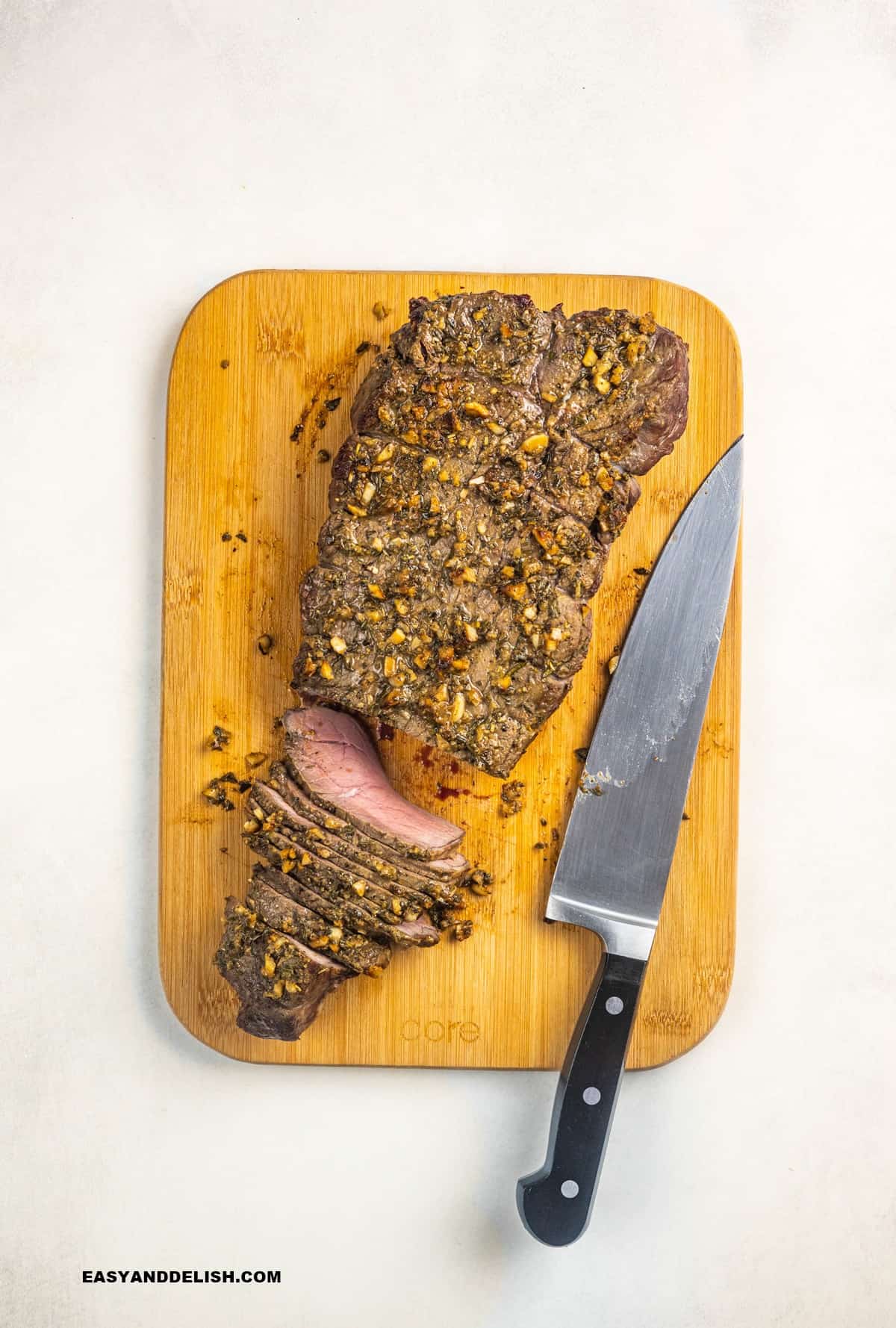
for the beef Gravy
1. In a small bowl, stir together xanthan gum or cornstarch and cold water to make a slurry and set aside.
2. Set the roasting pan with any drippings over medium heat and add the red wine, scraping the bottom to deglaze the pan. Let the wine reduce by at least half, add beef broth, and then bring to a light boil. Add onion powder, garlic powder, Worcestershire, Dijon, salt and pepper.
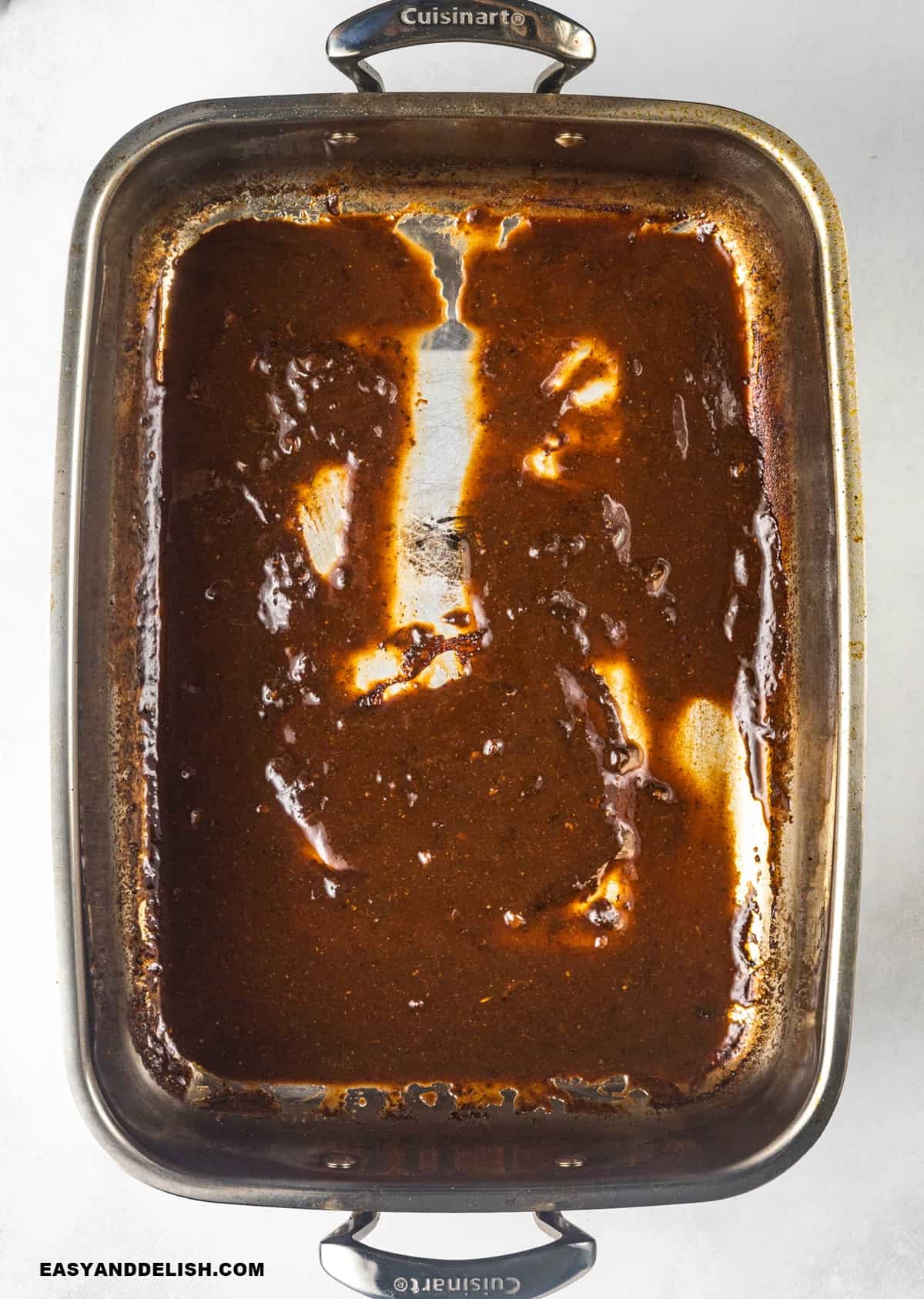
3. Add the slurry mixture to the gravy while stirring constantly (this prevents a lumpy gravy). Bring to a simmer and continue to simmer for 3-4 minutes until gravy thickens. Turn off the heat and stir in butter until incorporated. Add more salt and pepper to taste. Strain gravy through a sieve to make it smooth.
NOTE: If you don't enjoy gravy, serve your roast beef au jus (with the strained drippings from the pan).
HOW TO STORE
If you have any leftover roast beef, follow these simple storage tips:
- Fridge: Once your meat has cooled, slice and store the leftovers in an airtight container for up to 3-4 days.
- Freezer: You can also freeze roast beef slices in a freezer-safe bag or container for up to 2-3 months.
- Reheating: Reheating is easy! Warm leftover slices in the oven at a low temperature or microwave until warmed throughout.
What is roast beef?
Roast beef has roots in cuisines around the world, especially in the UK where it's been an iconic dish for centuries. Traditionally, it’s made from beef cuts that are slow-cooked to retain juiciness and flavor and served as the centerpiece of Sunday dinners and festive occasions.
You can enjoy this tender and tasty dish in various forms, from thinly sliced in sandwiches to serving it as the main course with sides like Yorkshire pudding and gravy.
BEST CUTS OF MEAT FOR ROAST BEEF
Choosing one of the correct cuts of beef is important in crafting the best roast beef. These are the top options:
- Top round roast (inside round): Considered a prime cut by many, the top round roast is a lean cut from the hindquarters of the cow. Beef top round roast offers a balanced blend of tenderness and deep beefy flavor, making the best cut for roast beef or preparing traditional roast beef dishes.
- Top sirloin roast (or top butt): Located between the loin and the round sections of the cow, the top sirloin roast boasts a combination of tenderness and robust beefiness. Its marbling enhances its flavor, making it a great choice for those who appreciate a meatier taste in their beef sirloin roast though.
- Bottom round roast (rolled rump roast): Hailing from the back end of the cow, the bottom round or beef rump roast is denser in texture. Once seasoned and slow-roasted, it releases rich beef notes, resulting in an incredibly flavorful beef bottom round roast.
- Eye of round roast: Beef eye round roast is a lean cut, positioned in the rear leg of the cow. While it might be less marbled compared to other cuts, when seasoned well and roasted with care, it produces a surprisingly tender and flavorful dish.
- Shoulder petit tender: Also known as chuck shoulder tender or shoulder tender, this smaller cut of beef makes tender and flavorful roast beef. This relatively lean cut of meat comes from the shoulder area of the animal. It is key to avoid overcooking; otherwise, it will become tough. It is also known as "poor man's filet mignon".
TIPS FOR MAKING THE BEST ROAST BEEF RECIPE
- Bring it to room temperature: Always let the roast sit at room temperature for at least 2 hours before roasting for a quicker and more even cook.
- Use a thermometer: Invest in a good meat thermometer to ensure perfect doneness. You want the internal temperature to reach 130 degrees F for medium-rare though.
- Low and slow: When cooking roast beef, roast it in the oven at a lower temperature for a longer time for maximum tenderness.
- Rest: Let the roast rest after pulling it out of the oven to allow the juices time to redistribute instead of spilling out as you slice it. It is key to making the best roast beef!
- Cut against the grain: For the juiciest roast beef slices, cut the roast against the grain.
- Love roasts? Try also our picanha roast recipe, stuffed pork loin roast recipe, Filipino roast chicken, roast turkey with our best turkey brine, roasted cornish hen, crockpot pork loin roast, and Instant Pot roast chicken.
- Nutrition: Roast beef is a nutrient-rich meat that provides essential proteins, vitamins, and minerals. When sourced from grass-fed cattle, it can also offer beneficial omega-3 fatty acids as well.
- How many people will a 3 lb roast feed? A 3 lb roast beef will typically serve 6-8 people, depending on the serving size though. If you serve it alongside several side dishes, it might stretch even further your roast beef dinner.
What to serve with
For a complete meal, pair your top round roast recipe with classic side dishes like these:
- Fresh horseradish sauce, or creamy horseradish sauce
- Yorkshire puddings or these popovers.
- Roasted potatoes, crispy smashed potatoes, air fryer potato wedges, or mashed sweet potatoes
- Steamed or roasted vegetables such as roasted carrots and parsnips or roasted delicata squash recipe. Also this air fryer broccolini!
- A simple green salad with a tangy vinaigrette
- Rich red wine, or beefy gravy
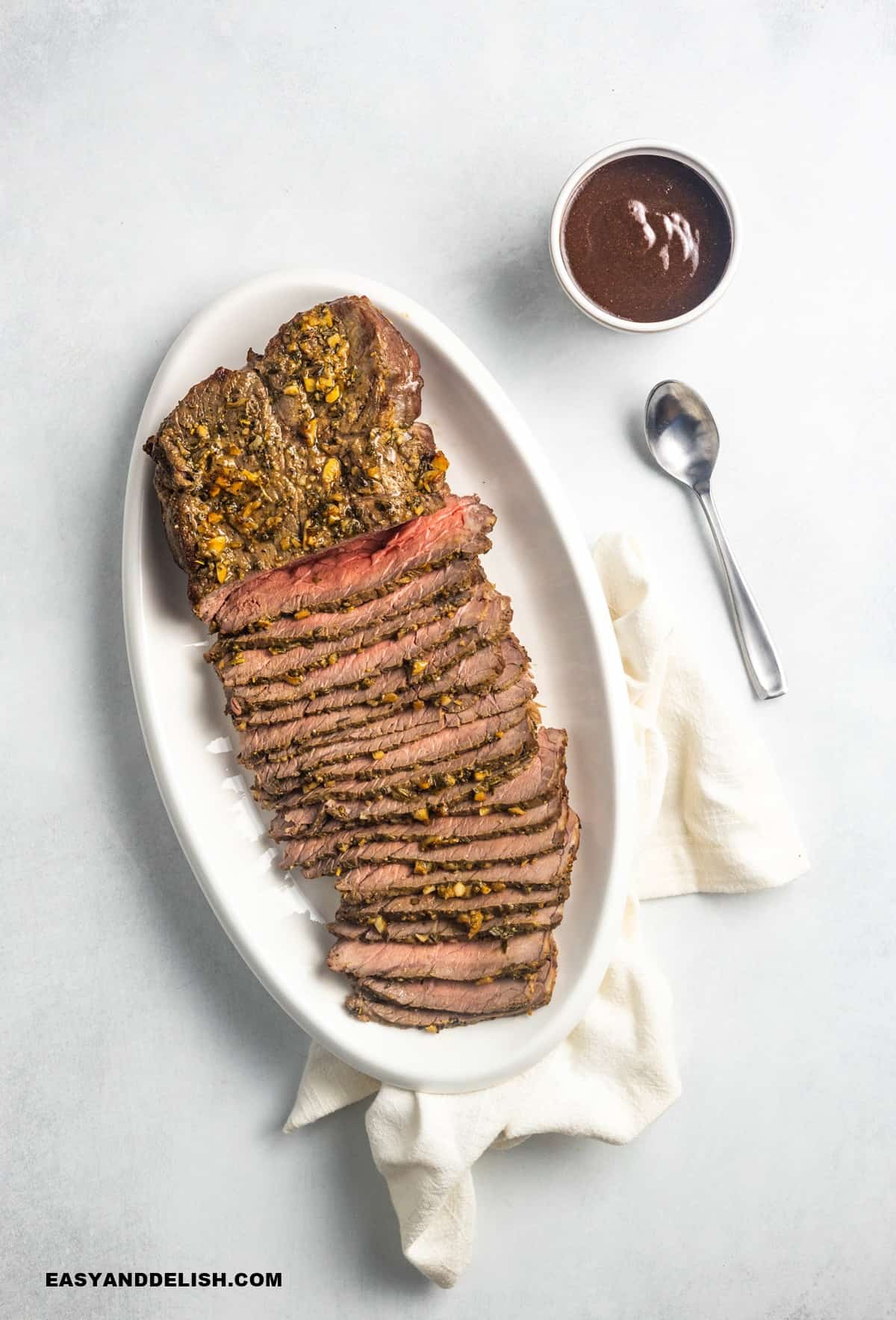
Roast beef vs. pot roast
Understanding beef cuts and their optimal cooking methods can make your cooking experience much more enjoyable. Here is a quick breakdown of the differences between roast beef and pot roast:
- Roast beef: Typically, this is a larger cut of beef that's oven-roasted. It’s usually cooked without any liquid and served sliced.
- Pot roast: This cut is best when braised with liquid in a covered pot, resulting in a tender and juicy roast (e.g. beef sirloin tip roast). Thus, it makes a great crockpot beef roast!
roast beef vs. beef roast
Although they sound similar, the terms "roast beef" and "beef roast" have different meanings. These are the differences:
- Roast beef: This usually refers to the prepared beef dish that has been roasted and is often served sliced. You can serve it either hot or cold and is a popular choice for sandwiches. Its flavor and texture come from the seasonings and roasting method. In the grocery store, roast beef cuts are often labeled by their specific name, such as "Top Round Roast" or "Sirloin Roast". It appears as a solid piece of meat, often tied with butcher's twine to help maintain its shape during cooking. Its surface is usually dark red and smooth, and it may have a thin layer of fat on one side.
- Beef roast: It refers to a larger cut of beef meant for roasting whole in the oven, such as rib roast, sirloin roast, and beef tenderloin roast. Thus, these make great beef roast recipes!
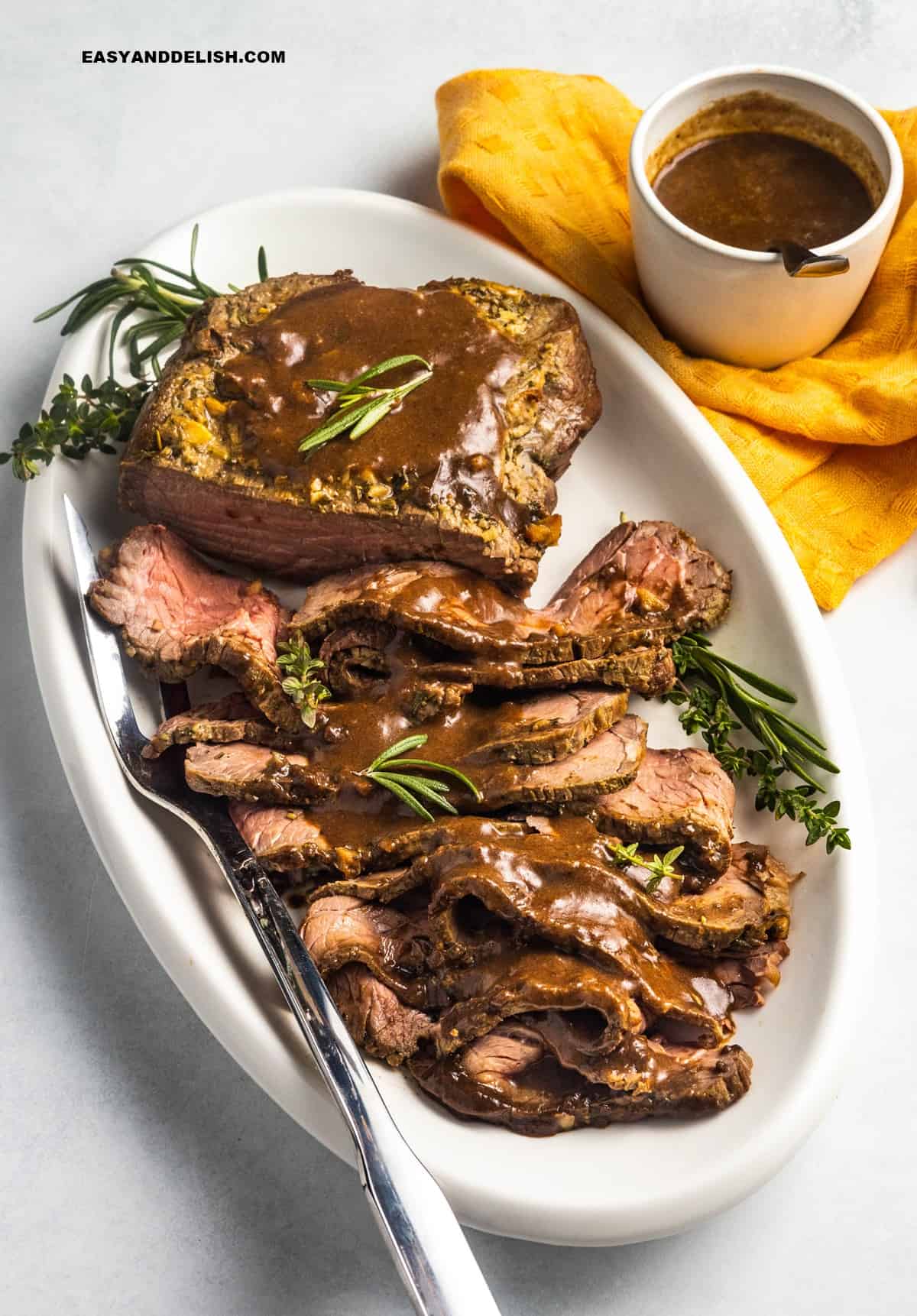
FAQS
To ensure your meat remains juicy and doesn't dry out, cook it at a low temperature and allow the roast to rest after cooking. in addition, baste it periodically throughout roasting.
It should be cooked uncovered to allow the exterior to develop a crust. However, if you find that the roast is browning too quickly, you can loosely cover it with aluminum foil during the latter part of the cooking process.
After searing it in the oven at 450º F for 15 minutes to brown its exterior, you can decrease the oven temperature to 250º F so your roast will have time to cook low and slow and get tender and juicy.
It will depend on the oven temperature, the weight of your roast beef, and the level of doneness you aim for. However, the general guideline is to cook roast beef in a preheated oven at 450º F for 15 minutes for searing and then, without opening the oven door, reduce the heat to 250º F and bake for about 25-28 minutes per pound, or until the thickest part of the roast reaches 130º F for Medium-Rare. While resting, the internal temperature will rise 5-10 degrees F more.
It depends on the level of doneness you want. However, the USDA recommends steaks and beef roasts to be cooked to 145°F (medium) and then rest for at least 3 minutes.
Roast beef is best when cooked low and slow, allowing the meat to become tender and retain its moisture. A slower cooking process also lets the flavors meld and develop, resulting in a more flavorful dish.
No, chuck roast is a specific cut of beef from the shoulder area and is ideal for slow cooking or braising due to its higher fat content. It makes great pot roast! On the other hand, you can cook roast beef in the oven from various cuts of beef, including top rounds and sirloin.
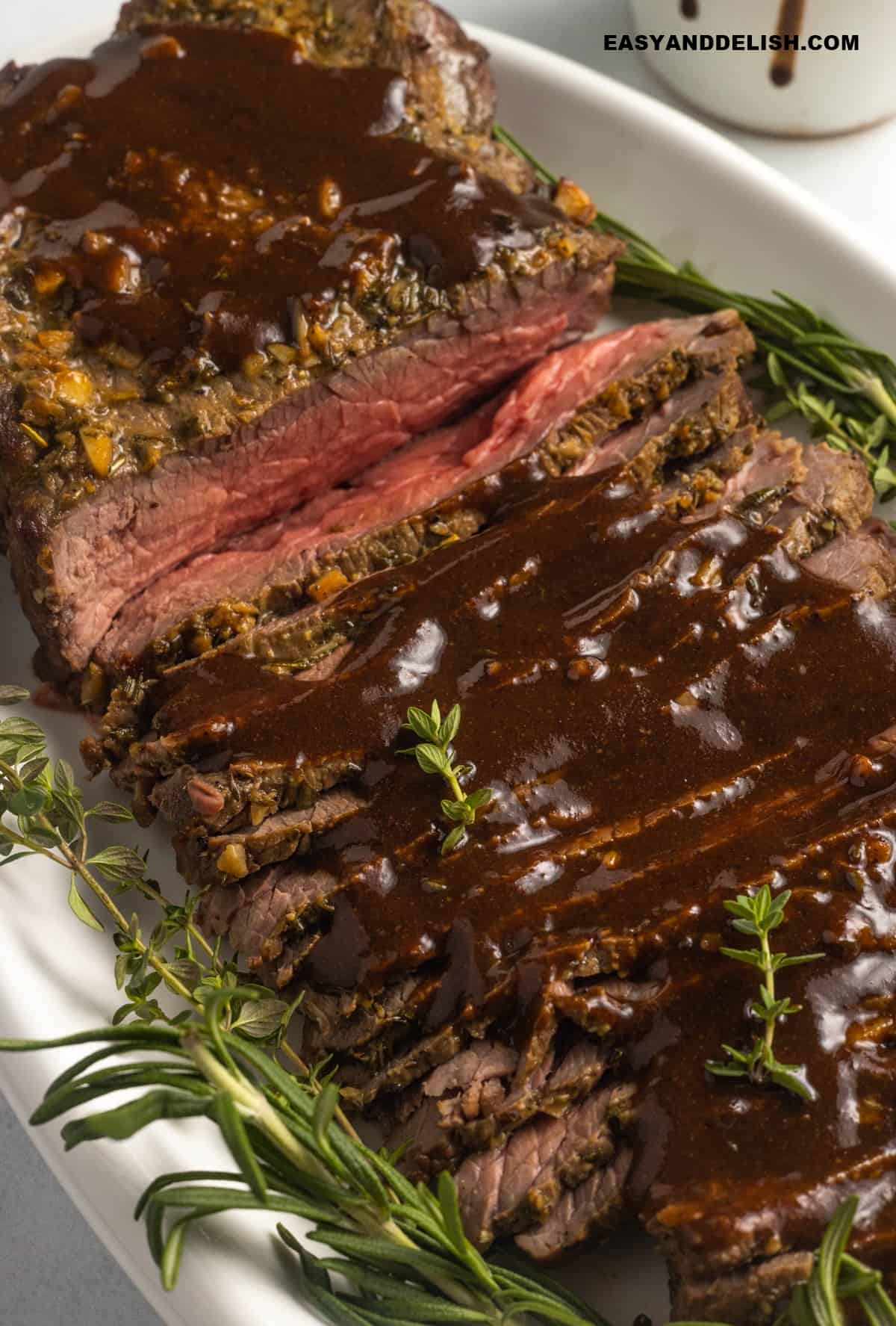
Other roast Beef recipes
These are leftover roast beef recipes that you can make easily with sliced roast beef for a quick meal:
PIN AND ENJOY!
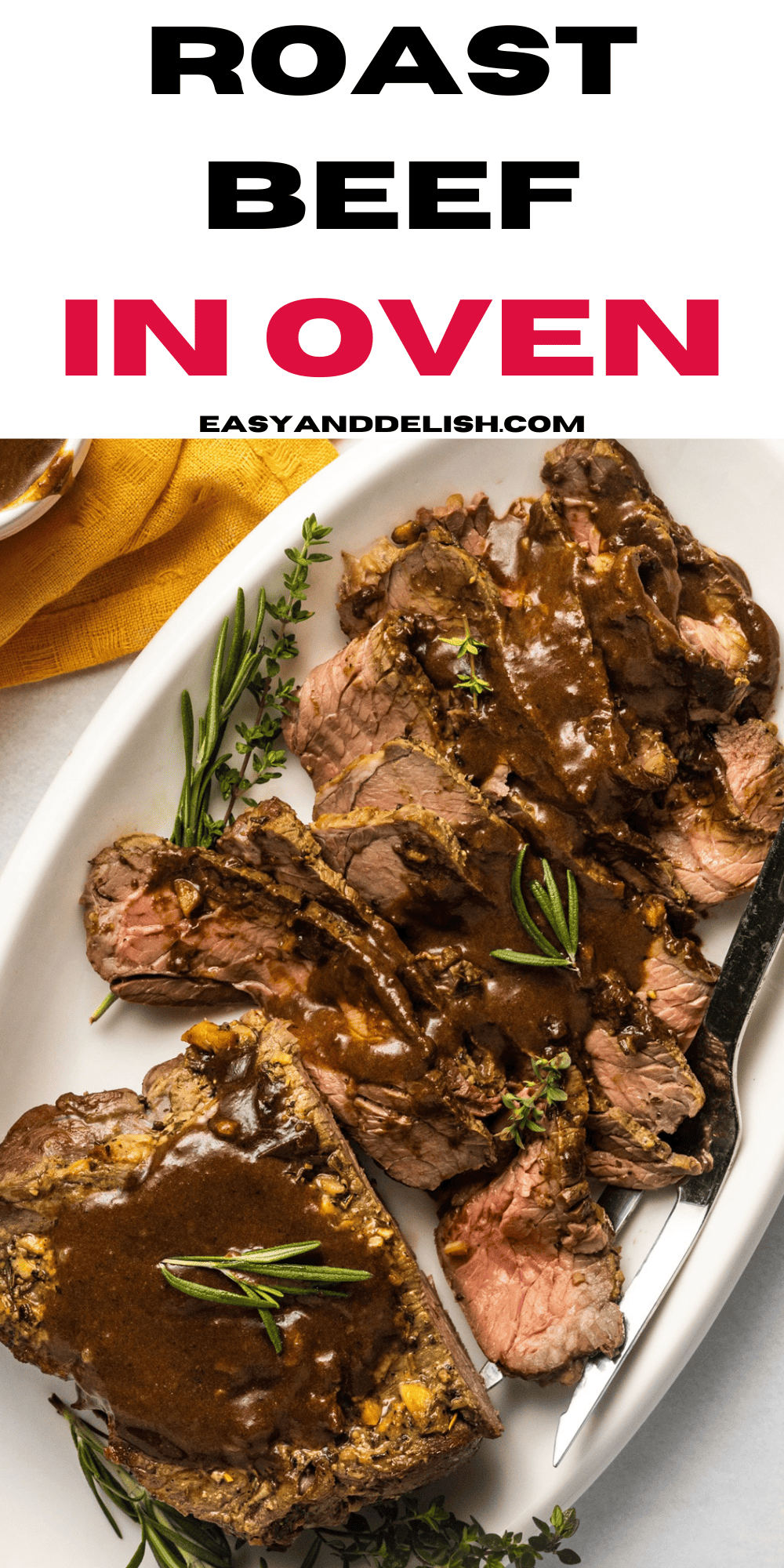
Top Round Roast Recipe
Equipment
- 1 oven
- 1 roasting pan
- 1 small bowl
- 2 oven-safe thermometer
- 1 cutting board
- 1 carving knife
Ingredients
For the roast beef:
- 3 lbs top round roast beef or 3 ½ lbs, bring it to room temperature 2 hours before cooking – Roast Substitutions: If you're unable to find Top Round Roast (Inside Round), other great options are Top Sirloin Roast (or Top Butt), Bottom Round Roast (Rolled Rump Roast), Eye of Round Roast, or 'chuck roast tender'.
- 3 tablespoon avocado oil or canola oil, or any high-smoke point oil with a mild flavor
- 1 tablespoon Dijon mustard - Alternatively stone-ground mustard or regular mustard will work.
- 1 tablespoon Worcestershire sauce - You can also try balsamic vinegar or soy sauce.
- 1 ½ tablespoon fresh rosemary Substitutes: marjoram, oregano, sage, or thyme
- 1 tablespoon minced garlic about 3 large cloves - Powdered garlic will work in a pinch.
- ½ teaspoon Italian seasoning - Or make your own with oregano, basil, thyme, sage, and rosemary.
- 2 teaspoon fine sea salt
- 1 teaspoon fresh ground black pepper
For the beef gravy:
- ¼ cup cold water NOTE: If you don't enjoy gravy, you can make roast beef au just by simply straining the liquid/drippings from the pan and serving as a side for the roast beef.
- 1 ½ tablespoon xanthan gum if you are not on a keto or low-carb diet, you can use the same amount of cornstarch
- ½ cup dry red wine such as Merlot – it will work for those on a low-carb diet
- 1 ½ cups beef broth if using low-sodium broth, adjust the salt to your taste
- ¼ teaspoon garlic powder - Or use extra onion powder.
- ¼ teaspoon onion powder - Similarly, you can replace onion powder with more garlic powder.
- ½ teaspoon Worcestershire sauce
- ⅛ teaspoon Dijon mustard
- ¼ teaspoon fine sea salt or to taste
- ¼ teaspoon freshly ground black pepper
- 2 tablespoon unsalted butter
Instructions
Prepare the Roast Beef:
- Preheat oven to 450º F. You’ll need a roasting pan with an oven rack to allow the air to circulate and to catch the drippings for gravy.
- In a small bowl, mix together oil, Dijon mustard, Worcestershire sauce, rosemary, garlic, Italian seasoning, salt and pepper. Set aside for the flavors to meld for 5 minutes.
- Pat the roast dry with paper towels and tie it with a kitchen string in 1-inch increments to create a more even thickness on the roast. Rub the roast all over with the seasoned oil. Put an oven-safe thermometer into the deepest part of the roast and set the roast on a rack inside the roasting pan.
- Bake on the center oven rack at 450º F for 15 minutes then (without opening the oven), reduce heat to 250º F and bake for about 25-28 minutes per pound, or until the thickest part of the roast reaches 130ºF for Medium-Rare. Note the temperature will continue to rise 5 degrees as it rests.
- Remove from the oven, tent with foil, and rest 15 minutes while you make the gravy. When ready to serve, cut off the kitchen string and then cut the roast beef against the grain, shaving the meat into thin slices.
Make the Beef Gravy:
- In a small bowl, stir together xanthan gum or cornstarch and cold water to make a slurry and set aside.
- Set the roasting pan with any drippings over medium heat and add the red wine, scraping the bottom to deglaze the pan. Once wine is reduced by at least half, add beef broth and bring to a light boil. Add onion powder, garlic powder, Worcestershire, Dijon, salt and pepper.
- Add the slurry mixture to the gravy while stirring constantly (this prevents a lumpy gravy). Bring to a simmer and continue to simmer for 3-4 minutes until gravy is thickened. Turn off the heat and stir in butter until incorporated. Add more salt and pepper to taste. Strain gravy through a sieve to make it smooth.
Recipe Video
Recipe Notes
- Fridge: Once your roast beef recipe has cooled, slice and store the leftovers in an airtight container for up to 3-4 days.
- Freezer: You can also freeze roast beef slices in a freezer-safe bag or container for up to 3 months.
- Reheating: Reheating is easy! Warm leftover roast beef slices in the oven at a low temperature or microwave until warmed throughout.
Nutrition
** Nutrition labels on easyanddelish.com are for educational purposes only. This info is provided as a courtesy and is only an estimate, since the nutrition content of recipes can vary based on ingredient brand or source, portion sizes, recipe changes/variations, and other factors. We suggest making your own calculations using your preferred calculator, based on which ingredients you use, or consulting with a registered dietitian to determine nutritional values more precisely.
Please note that health-focused and diet information provided on easyanddelish.com is for educational purposes and does not constitute medical advice, nor is it intended to diagnose, treat, cure, or prevent disease. Consult with your doctor or other qualified health professional prior to initiating any significant change in your diet or exercise regimen, or for any other issue necessitating medical advice.
This post was first published on August 23, 2023.



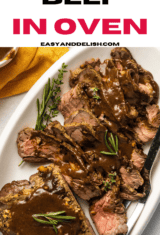
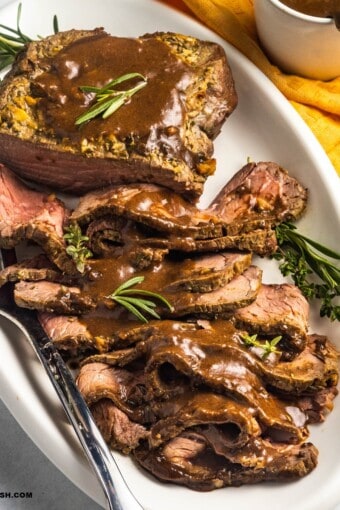
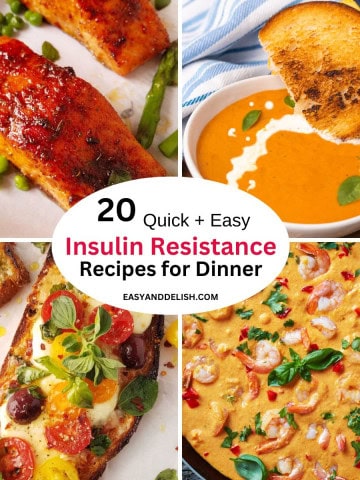
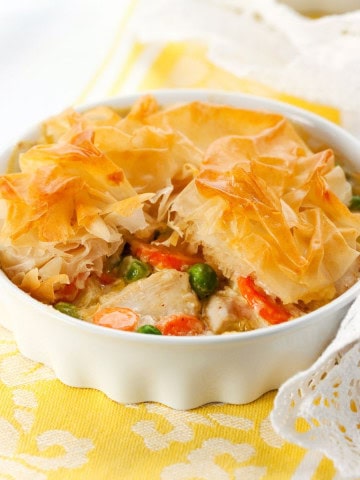
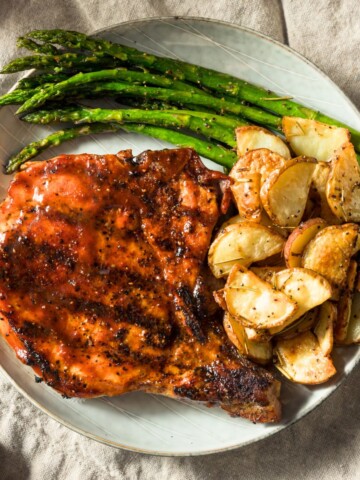

Leave a Reply